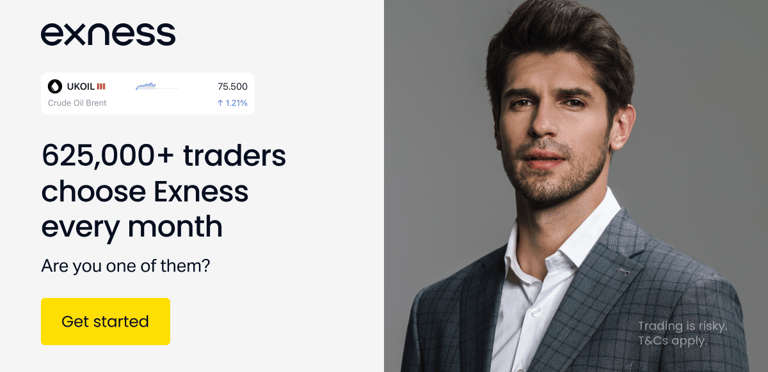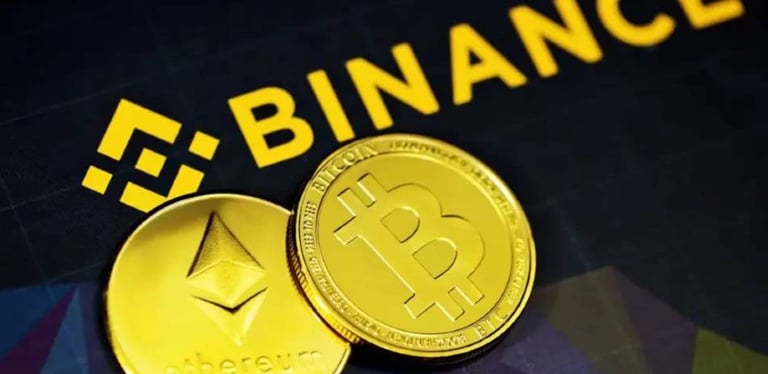FAQs
Frequently Asked Questions
1. Q: What is forex robot trading?
A: Forex robot trading involves using automated software to execute trades on the forex market based on predefined criteria.
2. Q: How do forex robots work?
A: Forex robots use algorithms to analyze market data and execute trades without human intervention.
3. Q: What are the benefits of using forex robots?
A: Benefits include eliminating emotional trading, executing trades quickly, and operating 24/5.
4. Q: What is an Expert Advisor (EA) in forex trading?
A: An EA is a type of forex robot used on the MetaTrader platform to automate trading.
5. Q: Can forex robots guarantee profits?
A: No, forex robots cannot guarantee profits as the market is inherently unpredictable.
6. Q: What is backtesting in forex robot trading?
A: Backtesting involves testing a trading strategy on historical data to evaluate its performance.
7. Q: How important is backtesting for forex robots?
A: Very important, as it helps determine the viability and potential profitability of the trading strategy.
8. Q: What is forward testing?
A: Forward testing evaluates the robot’s performance on live market data to ensure it works as expected.
9. Q: Are forex robots suitable for beginners?
A: Yes, but beginners should understand the risks and monitor the robots' performance regularly.
10. Q: What is the difference between a scalping robot and a trend-following robot?
A: A scalping robot makes quick, small trades, while a trend-following robot capitalizes on longer-term market trends.
11. Q: How do you choose a reliable forex robot?
A: Consider factors like backtesting results, user reviews, developer reputation, and transparency.
12. Q: What is the cost of a typical forex robot?
A: Costs vary widely, ranging from free to several thousand dollars.
13. Q: Can you create your own forex robot?
A: Yes, with programming knowledge and access to a trading platform that supports automated trading.
14. Q: What is the MetaTrader platform?
A: MetaTrader is a popular trading platform that supports forex robot trading through EAs.
15. Q: How do forex robots handle risk management?
A: They incorporate risk management rules like stop-loss orders and position sizing into their algorithms.
16. Q: What is optimization in the context of forex robots?
A: Optimization involves adjusting the robot's parameters to improve performance based on historical data.
17. Q: Can forex robots adapt to changing market conditions?
A: Some advanced robots use adaptive algorithms, but many struggle with rapidly changing conditions.
18. Q: What is curve fitting in backtesting?
A: Curve fitting is when a strategy is overly tailored to historical data, leading to poor real-world performance.
19. Q: How do you avoid curve fitting?
A: Use robust backtesting methods, forward testing, and avoid over-optimizing parameters.
20. Q: What is a drawdown in forex trading?
A: A drawdown is a peak-to-trough decline in the value of a trading account.
21. Q: How do forex robots handle drawdowns?
A: They may include drawdown controls, like halting trading after a certain loss level.
22. Q: What is a VPS in forex trading?
A: A Virtual Private Server (VPS) hosts forex robots to ensure they run continuously without interruption.
23. Q: Why use a VPS for forex robots?
A: A VPS provides a stable, high-speed connection, reducing the risk of downtime or connectivity issues.
24. Q: What is latency in forex trading?
A: Latency is the delay between trade initiation and execution, which can impact trading performance.
25. Q: How can latency affect forex robot trading?
A: High latency can lead to missed or delayed trades, especially in fast-moving markets.
26. Q: What is a grid trading robot?
A: A grid trading robot places buy and sell orders at regular intervals to capture market fluctuations.
27. Q: What are the risks of grid trading robots?
A: They can accumulate large positions in adverse markets, leading to significant losses.
28. Q: What is a Martingale strategy in forex robots?
A: A Martingale strategy involves doubling the position size after a loss, aiming to recover losses with a single win.
29. Q: What are the dangers of using Martingale strategies?
A: They can lead to large losses and require substantial capital to sustain prolonged losing streaks.
30. Q: What is a neural network in forex robots?
A: A neural network is an AI model that can learn and adapt trading strategies based on market data.
31. Q: How do neural networks improve forex robots?
A: They can identify complex patterns and improve decision-making in unpredictable markets.
32. Q: What is machine learning in the context of forex robots?
A: Machine learning involves algorithms that learn from data to improve their trading decisions over time.
33. Q: Can forex robots operate in all market conditions?
A: Most robots are designed for specific conditions and may not perform well in all market environments.
34. Q: What is a breakout strategy in forex robots?
A: A breakout strategy identifies and trades on price movements that break through support or resistance levels.
35. Q: How do forex robots execute trades?
A: They send trade orders to the broker’s platform based on predefined rules and market conditions.
36. Q: What is slippage in forex robot trading?
A: Slippage occurs when a trade is executed at a different price than expected due to market volatility.
37. Q: How can slippage be minimized in forex robot trading?
A: Using limit orders, trading during high liquidity periods, and choosing a reliable broker can help minimize slippage.
38. Q: What are the common programming languages for forex robots?
A: Common languages include MQL4/MQL5 for MetaTrader, Python, and C++.
39. Q: Can forex robots be used for other markets?
A: Yes, they can be adapted for other markets like stocks, commodities, and cryptocurrencies.
40. Q: What is a mean reversion strategy in forex robots?
A: A mean reversion strategy bets that prices will revert to their historical average.
41. Q: How do forex robots handle news events?
A: Some robots incorporate news filters to avoid trading during high-impact events that cause volatility.
42. Q: What is algorithmic trading?
A: Algorithmic trading uses computer programs to execute trades based on predefined criteria, similar to forex robots.
43. Q: What are the legal considerations for using forex robots?
A: Ensure compliance with regulations in your jurisdiction and understand your broker’s policies on automated trading.
44. Q: How do forex robots impact market liquidity?
A: High-frequency trading by robots can increase market liquidity but also contribute to volatility.
45. Q: What is the role of a forex broker with forex robots?
A: Brokers execute the trades generated by forex robots and provide the trading platform and market access.
46. Q: Can forex robots be used on multiple accounts?
A: Yes, many robots can be deployed across multiple accounts simultaneously.
47. Q: What are the typical settings to configure in a forex robot?
A: Settings include lot size, risk parameters, stop-loss, take-profit levels, and trade filters.
48. Q: How do you monitor the performance of a forex robot?
A: Use performance metrics like profit and loss, drawdown, win rate, and trade frequency.
49. Q: What is the Sharpe ratio in forex robot trading?
A: The Sharpe ratio measures risk-adjusted return, helping evaluate the robot’s performance.
50. Q: Can forex robots handle high-frequency trading (HFT)?
A: Yes, some robots are designed for HFT, executing numerous trades within seconds.
51. Q: What is the difference between a forex robot and a signal service?
A: A forex robot automates trading, while a signal service provides trade recommendations that traders execute manually.
52. Q: Can forex robots trade 24/7?
A: Yes, they can trade continuously, even when the trader is not available.
53. Q: What is a proprietary trading strategy in forex robots?
A: A proprietary strategy is a unique, in-house trading approach used by a specific robot.
54. Q: What is a tick data in forex trading?
A: Tick data records every market price movement, providing detailed information for analysis.
55. Q: How does tick data improve forex robots?
A: It allows for more accurate backtesting and strategy development.
56. Q: What is a high-frequency trading (HFT) forex robot?
A: An HFT robot executes a large number of trades at extremely high speeds to profit from small price changes.
57. Q: What are the risks of using high-frequency trading robots?
**A
:** Risks include higher transaction costs, increased market volatility, and the need for advanced technology.
58. Q: Can forex robots be used on mobile devices?
A: Yes, many trading platforms offer mobile apps that support forex robot trading.
59. Q: What is the importance of historical data in forex robot trading?
A: Historical data is crucial for backtesting and developing effective trading strategies.
60. Q: How do forex robots handle different market sessions?
A: Some robots are optimized for specific sessions (e.g., London or New York) to take advantage of varying liquidity and volatility.
61. Q: What is an arbitrage forex robot?
A: An arbitrage robot exploits price discrepancies between different brokers or markets to generate profits.
62. Q: What are the challenges of using arbitrage robots?
A: Challenges include latency, broker restrictions, and the need for multiple accounts.
63. Q: How do you update a forex robot?
A: Updates are usually provided by the developer and involve downloading and installing the latest version.
64. Q: What is a hybrid trading strategy in forex robots?
A: A hybrid strategy combines elements of different trading approaches, such as trend-following and mean reversion.
65. Q: How do forex robots handle slippage?
A: Robots may include settings to account for slippage or use limit orders to mitigate its impact.
66. Q: What is a swing trading robot?
A: A swing trading robot aims to capture medium-term price movements, holding positions for days or weeks.
67. Q: What is the role of technical indicators in forex robots?
A: Technical indicators provide signals based on price data, helping robots make trading decisions.
68. Q: Can forex robots be used for social trading?
A: Yes, some platforms allow users to copy trades from successful robots or traders.
69. Q: What is a PAMM account in forex trading?
A: A PAMM (Percentage Allocation Management Module) account allows investors to allocate funds to be managed by a forex trader or robot.
70. Q: How do you ensure the security of a forex robot?
A: Use reputable sources, avoid sharing personal information, and ensure the software is regularly updated.
71. Q: What is a carry trade robot?
A: A carry trade robot takes advantage of interest rate differentials between currencies to earn interest income.
72. Q: What are the risks of using carry trade robots?
A: Risks include currency depreciation and changes in interest rate policies.
73. Q: How do forex robots manage account equity?
A: Robots may include features to adjust trade sizes based on account equity to manage risk.
74. Q: What is the significance of win rate in forex robots?
A: The win rate indicates the percentage of profitable trades, helping evaluate the robot’s effectiveness.
75. Q: What is a proprietary trading firm?
A: A proprietary trading firm uses its own capital to trade and may develop forex robots to execute its strategies.
76. Q: How do you troubleshoot issues with a forex robot?
A: Check for software updates, review error logs, consult the user manual, and contact the developer for support.
77. Q: Can forex robots be used with multiple brokers?
A: Yes, but they may need adjustments to accommodate different broker policies and trading conditions.
78. Q: What is the impact of regulatory changes on forex robots?
A: Regulatory changes can affect leverage, trading conditions, and the legality of certain strategies.
79. Q: How do forex robots handle order execution?
A: Robots send trade orders to the broker’s platform, which executes them based on market conditions.
80. Q: What is the significance of trade frequency in forex robots?
A: Trade frequency affects transaction costs and can influence overall profitability.
81. Q: How do forex robots handle partial fills?
A: Robots may include settings to manage partial fills or wait for full order execution.
82. Q: What is a trailing stop in forex robot trading?
A: A trailing stop adjusts the stop-loss level as the trade moves in the trader’s favor, locking in profits.
83. Q: Can forex robots trade multiple currency pairs simultaneously?
A: Yes, many robots are designed to trade multiple pairs to diversify risk.
84. Q: How do forex robots manage leverage?
A: Robots can be programmed to use specific leverage levels based on the trader’s risk tolerance.
85. Q: What is a stop-loss order in forex robot trading?
A: A stop-loss order automatically closes a trade to prevent further losses when the price reaches a certain level.
86. Q: How do forex robots optimize trade entry and exit points?
A: Robots use technical indicators, price patterns, and algorithms to determine optimal entry and exit points.
87. Q: What is a proprietary algorithm?
A: A proprietary algorithm is a unique trading formula developed by an individual or firm for exclusive use.
88. Q: Can forex robots be used in demo accounts?
A: Yes, demo accounts are useful for testing and refining forex robots without risking real money.
89. Q: How do forex robots handle market gaps?
A: Robots may include settings to avoid trading during high gap risk periods or use gap-specific strategies.
90. Q: What is a statistical arbitrage strategy?
A: Statistical arbitrage involves trading based on statistical models that predict price movements.
91. Q: What is the role of historical volatility in forex robots?
A: Historical volatility helps robots adjust their strategies based on expected market fluctuations.
92. Q: How do you evaluate the performance of a forex robot?
A: Use metrics like return on investment, drawdown, Sharpe ratio, and win rate to assess performance.
93. Q: What is an event-driven trading strategy?
A: An event-driven strategy focuses on trading opportunities arising from specific events like economic reports or geopolitical developments.
94. Q: Can forex robots handle news trading?
A: Some advanced robots include news filters and algorithms to trade around significant news events.
95. Q: What is a momentum trading strategy in forex robots?
A: A momentum strategy capitalizes on the strength of existing trends, entering trades in the direction of the trend.
96. Q: How do forex robots manage trading costs?
A: Robots consider factors like spreads, commissions, and slippage to manage and minimize trading costs.
97. Q: What is a mean reversion strategy?
A: Mean reversion strategies assume that prices will revert to their historical averages, trading against extreme price movements.
98. Q: How do forex robots handle high-impact news?
A: Robots may pause trading or use specific strategies to avoid the volatility caused by high-impact news.
99. Q: What is the role of sentiment analysis in forex robots?
A: Sentiment analysis uses data from news and social media to gauge market sentiment, informing trading decisions.
100. Q: How do you ensure the reliability of a forex robot?
A: Choose reputable developers, perform extensive backtesting and forward testing, and regularly monitor performance.














